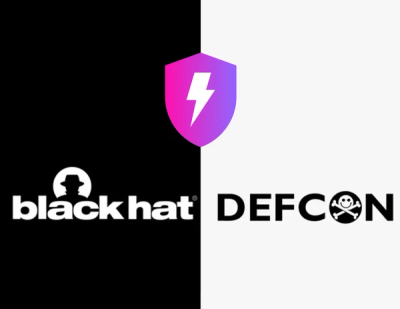
Security News
Meet Socket at Black Hat and DEF CON 2025 in Las Vegas
Meet Socket at Black Hat & DEF CON 2025 for 1:1s, insider security talks at Allegiant Stadium, and a private dinner with top minds in software supply chain security.
xgpu is an aggressively typed, red-squiggle-free Python binding
of wgpu-native, autogenerated from
the upstream C headers.
Not 'production ready'.
Wheels are built for Mac (x86 only), Windows, and Linux for Python 3.7+:
pip install xgpu
Why another webgpu/wgpu_native binding when wgpu-py already exists and is semi-mature?
xgpu takes full advantage of Python type annotations, enabling quality of life
features like IDE autocomplete for enum valuesxgpu is 99% autogenerated from the headers, and aims to always be in sync with
the latest wgpu-native releasexgpu is substantially faster than wgpuxgpu is a mostly 1-to-1 binding of webgpu.h (+wgpu.h from wgpu-native).
xgpu largely tries to maintain the names from webgpu.h rather than localizing
them into Python's conventions.
webgpu.h but lose WGPU prefixes: WGPUTextureSampleType -> TextureSampleTypeWGPUAdapterProperties.vendorName -> AdapterProperties.vendorNamewgpuDeviceHasFeature -> Device.hasFeatureWGPUTextureUsage_CopySrc -> TextureUsage.CopySrc
WGPUBufferUsage_None -> BufferUsage._None, WGPUTextureDimension_2D -> TextureDimension._2Dwebgpu.h requires constructing various structs, for example WGPUExtent3D. These can be created in two ways:
# Recommended: create explicit initialized struct (note lowercase name)
extents = xgpu.extent3D(width = 100, height = 100, depthOrArrayLayers = 1)
# Alternative: create 0-initialized struct and then mutate values
extents = xgpu.Extent3D()
extents.width = 100
extents.height = 100
extents.depthOrArrayLayers = 1
As a C API, webgpu.h follows typical C convention for member functions, which is to define
them like:
uint32_t wgpuTextureGetHeight(WGPUTexture texture)
In xgpu these become genuine member functions, e.g.,
class Texture:
def getHeight(self) -> int
Some webgpu.h functions and structs take arrays using the convention of passing first
the array item count, and then the array pointer, e.g.,
void wgpuQueueSubmit(WGPUQueue queue, size_t commandCount, WGPUCommandBuffer const * commands)
typedef struct WGPUPipelineLayoutDescriptor {
// ...
size_t bindGroupLayoutCount;
WGPUBindGroupLayout const * bindGroupLayouts;
} WGPUPipelineLayoutDescriptor;
These are translated to take lists:
class Queue:
def submit(self, commands: List[CommandBuffer]])
def pipelineLayoutDescriptor(*, bindGroupLayouts: List["BindGroupLayout"])
Enums are translated into IntEnums:
mode = xgpu.AddressMode.MirrorRepeat
print(int(mode)) # 2
print(mode.name) # "MirrorRepeat"
mode = xgpu.AddressMode(2)
print(mode.name) # "ClampToEdge"
Some enums are meant to be ORed together into bitflags. These can be combined in the natural way:
usage = xgpu.BufferUsage.MapRead | xgpu.BufferUsage.CopyDst
print(usage) # prints: 9
This works because IntEnums inherit all the int methods include bitwise
operations; however, this discards the type information.
A slightly more annoying but type-safer way is:
usage = xgpu.BufferUsage.MapRead.asflag() | xgpu.BufferUsage.CopyDst
print(usage) # prints: BufferUsage.MapRead | BufferUsage.CopyDst
You can also create typed flags from bare ints:
usage = xgpu.BufferUsageFlags(0b1001)
print(usage) # prints: BufferUsage.MapRead | BufferUsage.CopyDst
You can test for a particular flag with the python in operator:
has_map_read = xgpu.BufferUsage.MapRead in mybuffer.getUsage()
Callbacks must be explicitly wrapped in the appropriate callback type:
def my_adapter_cb(status: xgpu.RequestAdapterStatus, gotten: xgpu.Adapter, msg: str):
print(f"Got adapter with msg:'{msg}', status: {status.name}")
cb = xgpu.RequestAdapterCallback(my_adapter_cb)
The webgpu.h structure chaining convention is represented by ChainedStruct, whose
constructor takes a list of Chainable and automatically creates the linked chain.
shader_source = """..."""
shader = device.createShaderModule(
nextInChain=xgpu.ChainedStruct(
[xgpu.shaderModuleWGSLDescriptor(code=shader_source)]
),
hints=[],
)
xgpu has two translations for void *: VoidPtr represents a pointer to
opaque data (e.g., a window handle) while DataPtr represents a pointer
to a sized data structure (e.g., texture data you want to upload).
For example,
# Note use of VoidPtr.NULL and VoidPtr.raw_cast
surf_desc = xgpu.surfaceDescriptorFromWindowsHWND(
hinstance=xgpu.VoidPtr.NULL,
hwnd=xgpu.VoidPtr.raw_cast(self.window_handle),
)
# DataPtr.wrap can wrap anything supporting the 'buffer' interface
bytedata = bytearray(100)
wrapped = xgpu.DataPtr.wrap(bytedata)
queue.writeBuffer(
buffer=some_buffer,
bufferOffset=0,
data=wrapped
)
# This includes numpy arrays
my_array = np.ones(100, dtype=np.float32)
wrapped = xgpu.DataPtr.wrap(my_array)
You will need bun to run the codegen. Deno might
work but just go ahead and install bun. You will also need to have
ruff and cffi installed in python (pip install ruff cffi).
Then:
python codegen/fetch_wgpu_bins.py
bun codegen/generate.ts
cd xgpu
python _build_ext.py
cd ..
pip install .
FAQs
Unknown package
We found that xgpu demonstrated a healthy version release cadence and project activity because the last version was released less than a year ago. It has 1 open source maintainer collaborating on the project.
Did you know?

Socket for GitHub automatically highlights issues in each pull request and monitors the health of all your open source dependencies. Discover the contents of your packages and block harmful activity before you install or update your dependencies.

Security News
Meet Socket at Black Hat & DEF CON 2025 for 1:1s, insider security talks at Allegiant Stadium, and a private dinner with top minds in software supply chain security.

Security News
CAI is a new open source AI framework that automates penetration testing tasks like scanning and exploitation up to 3,600× faster than humans.

Security News
Deno 2.4 brings back bundling, improves dependency updates and telemetry, and makes the runtime more practical for real-world JavaScript projects.